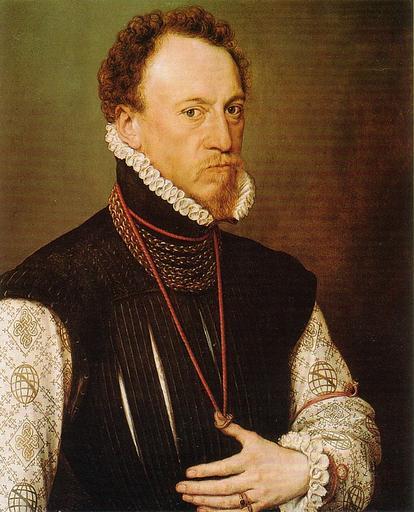MAKE A MEME
View Large Image

| View Original: | Sir_Henry_Lee,_son_of_Margaret_Wyatt,_Anne_Boleyn's_favorite_companion.jpg (566x700) | |||
| Download: | Original | Medium | Small | Thumb |
| Courtesy of: | www.flickr.com | More Like This | ||
| Keywords: henry lee henrylee portrait 16th century 16thcentury elizabeth i elizabethi tudors nobility united kingdom unitedkingdom britain gentry people indoor Sir Henry Lee KG (1533 – 12 February 1611) of Ditchley was Master of the Ordnance under Queen Elizabeth I of England. Lee became Queen Elizabeth I’s champion in 1570 and was appointed Master of the Royal Armouries in 1580, an office which he held until his death. As Queen's Champion, Lee devised the Accession Day tilts held annually on 17 November, the most important Elizabethan court festival from the 1580s. He retired as Queen's Champion in 1590, and his poems "His Golden Locks" and "Time's Eldest Son" were set to music by John Dowland and performed at the lavish retirement pageant. He was made a Knight of the Order of the Garter in 1597. Sir Henry, like most courtiers of the day, had a portrait painted by a leading artist. In Lee's picture, his sleeves are decorated with armillary spheres, a symbol of wisdom and also his device as queen's champion. His sleeves are also decorated with lovers knots which, combined with the armillary spheres can be seen to represent his love for learning (the wisdom of the armillary spheres) and for the Queen (his symbol as her champion). Lee also wears several rings tied to his arm, and has his finger through a third ring around his neck. This may represent his marriages, and the third ring, which is not quite on his finger, may represent his relationship with Anne Vavasour. After the death of his wife Ann Paget in 1590, Lee openly lived with his long-time mistress, Anne Vavasour, formerly one of the Queen's Ladies in Waiting. Sir Henry commissioned the famous Ditchley Portrait of Queen Elizabeth, which shows her standing on a map of the British Isles, surveying her dominions. One foot rests near Ditchley in Oxfordshire, to commemorate her visit to Sir Henry Lee there, as sign of particular favour. Sir Henry was later famous for refusing to receive his monarch a second time, because of the enormous expense. He was the uncle of Captain Thomas Lee, a troublesome soldier on whose behalf he allowed himself to be bound over and who was put to death in 1601 for an involvement in the treason of the 2nd Earl of Essex. Sir Henry Lee KG (1533 – 12 February 1611) of Ditchley was Master of the Ordnance under Queen Elizabeth I of England. Lee became Queen Elizabeth I’s champion in 1570 and was appointed Master of the Royal Armouries in 1580, an office which he held until his death. As Queen's Champion, Lee devised the Accession Day tilts held annually on 17 November, the most important Elizabethan court festival from the 1580s. He retired as Queen's Champion in 1590, and his poems "His Golden Locks" and "Time's Eldest Son" were set to music by John Dowland and performed at the lavish retirement pageant. He was made a Knight of the Order of the Garter in 1597. Sir Henry, like most courtiers of the day, had a portrait painted by a leading artist. In Lee's picture, his sleeves are decorated with armillary spheres, a symbol of wisdom and also his device as queen's champion. His sleeves are also decorated with lovers knots which, combined with the armillary spheres can be seen to represent his love for learning (the wisdom of the armillary spheres) and for the Queen (his symbol as her champion). Lee also wears several rings tied to his arm, and has his finger through a third ring around his neck. This may represent his marriages, and the third ring, which is not quite on his finger, may represent his relationship with Anne Vavasour. After the death of his wife Ann Paget in 1590, Lee openly lived with his long-time mistress, Anne Vavasour, formerly one of the Queen's Ladies in Waiting. Sir Henry commissioned the famous Ditchley Portrait of Queen Elizabeth, which shows her standing on a map of the British Isles, surveying her dominions. One foot rests near Ditchley in Oxfordshire, to commemorate her visit to Sir Henry Lee there, as sign of particular favour. Sir Henry was later famous for refusing to receive his monarch a second time, because of the enormous expense. He was the uncle of Captain Thomas Lee, a troublesome soldier on whose behalf he allowed himself to be bound over and who was put to death in 1601 for an involvement in the treason of the 2nd Earl of Essex. | ||||